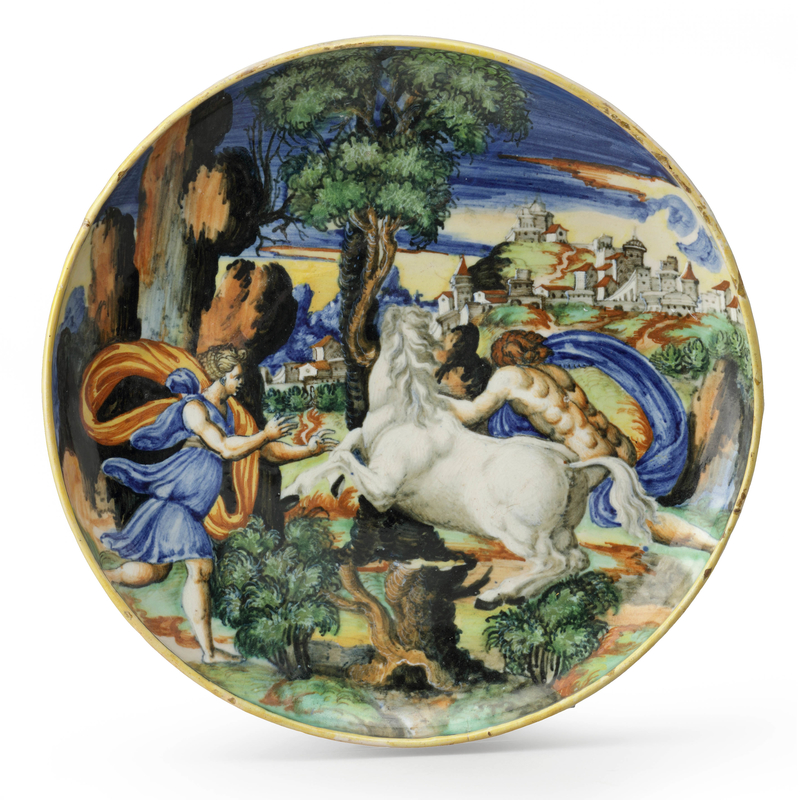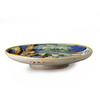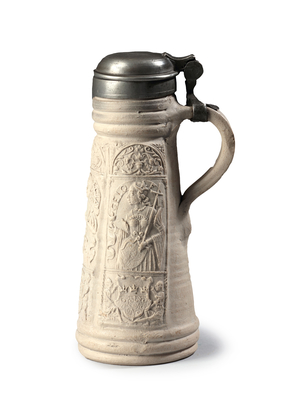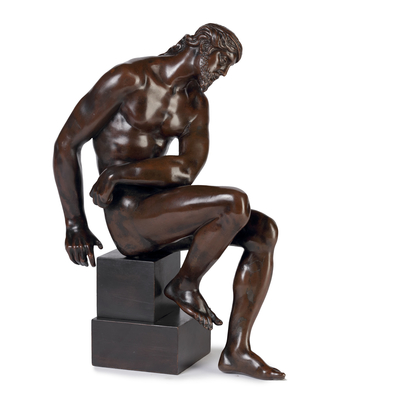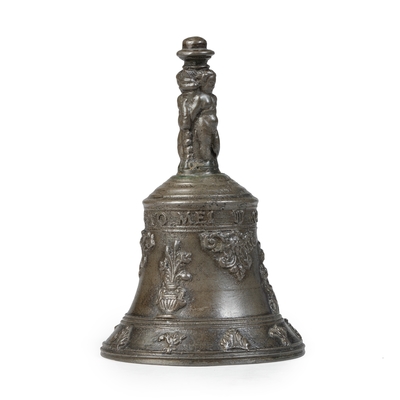Italian maiolica Istoriato dish with Athena and Poseidon, Duchy of Urbino
Global shipping available
- Origin
- Urbino, Italy
- Period
- Mid 16th century
- Material
- Maiolica
- Diameter
- 29.1 cm
- Literature
F. Berti, Storia delle ceramica di Montelupo - Volume Secondo, Firenze 1998, pp. 333-339.
G. C. Bojani, Gaetano Ballardini e la Ceramica a Roma - Le Maioliche del Museo Artistico Industriale, Firenze 2000, p. 46, 47, 51, 58.
Questions about this object?
Please use one of the contact options below:
Description
This colourful dish on a foot was made in the Duchy of Urbino in the Istoriato style. The dish is painted with a scene from the classic story of the battle between Athena and Poseidon over the naming of the city of Athens. 'Istoriato' is derived from the Italian 'Istoria', meaning history: pottery in the Istoratio style was painted with scenes from historical, mythical and biblical stories. The scenes were inspired by the realistic etchings, prints and paintings of Italian and German Renaissance painters, such as Raphael and Dürer. Characteristic of the Istoratio work from the Duchy of Urbino is that the painting covers almost the entire dish. The earthenware objects are like small paintings, in which the maker creates a perspectival image with a limited but colourful palette. The Istoriato dinnerware was loved by the elite as showpieces, and the distinctive Renaissance subjects of the paintings were in line with the revival of interest in classical antiquity and the style of contemporary painting.
This dish depicts the struggle between Athena and Poseidon, both of whom wished to associate with Athens as patron saint. A council of gods promised the city-state to the one who had the most useful gift for the inhabitants. Poseidon gave the city a horse, Athene planted an olive tree for peace and prosperity. The gods chose Athena and the city has been called 'Athens' ever since. In another version of the myth, Poseidon strikes the ground with his staff and a fountain wells up as a gift to the inhabitants. But the water turns out to be salty, because Poseidon is the god of the sea, and they chose Athena. Poseidon then flew into a rage and cursed the city, which is why the city's water supply is problematic to this very day. The struggle is between Athena, on the left of the dish, with elegantly braided hair in a blue tunic with a red cloth, and Poseidon, on the right, with a white horse and a blue cloth. In the middle is the fully-grown olive tree from Athena. In the background is a city profile, probably Athens.
The dish is made of maiolica: refined earthenware with an opaque white tin-glaze, decorated with brightly coloured images and shapes. The tin glaze becomes white due to the presence of tin oxide, a powdery white ash. Maiolica was an expensive product because of the way it was made and great care was taken in the shaping and decoration of the pottery. On the lower edge of this dish, the red earthenware is visible through the white glaze.
